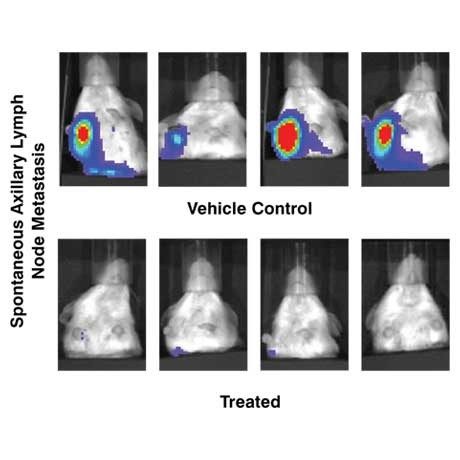Bioluminescence imaging (BLI) relies on detection of light from luciferase-expressing cells in a model. This is commonly achieved through implantation of cells engineered to express luciferase constitutively or by use of transgenic animals that express luciferase in one or more tissues of interest. Emission of light from these cells or tissues occurs following systemic injection of the luciferase substrate, luciferin.

Bioluminescence for Cancer Studies
We utilize optical imaging and a large panel of luciferase-expressing tumor cell lines for tracking tumor burden in orthotopic, disseminated and metastasis tumor models. We have the capability to engineer our in-house cell lines or your personal cell lines to express luciferase for BLI detection.
We also have a license agreement from Dana Farber Cancer Institute that provides access to many characterized, in vivo validated luciferase-expressing tumor lines, including:
Glioma
Neuroblastoma
Leukemia
Lymphoma
Multiple myeloma
Prostate
Breast
Lung
Colorectal
Luciferase-based Orthotopic Models
Luciferase-based Metastasis Models
Brain
Breast
Prostate
Pancreas
Lung
Liver
Ovarian
Renal
Quantitative means for assessing progression and treatment response in metastasis models:
Intracardiac (e.g., to bone) and intravenous (e.g., to lung) cell injection-based models of metastasis
Spontaneous metastasis models:
Mammary fat pad implanted cells that metastasize to lymph nodes and lungs
Connect
Luciferase-based Hematologic Disseminated Tumor Models
Multiple Myeloma
Lymphoma
Leukemia
Bioluminescence imaging provides a powerful means for quantifying systemic tumor progression in parallel with localized solid tumors, which occur in hematologic tumor models. Licensed access to the extensive Dana Farber Cancer Institute luciferase-expressing panel increases our footprint in many cancer types, including hematologic models.
Cell Tracking Capability
Cell tracking can be achieved using luciferase reporter expression. For example, cell-based therapeutics, including targeting, tissue distribution and viability can be studied in vivo.
Luciferase Reporter Transgenics
An increasingly broad variety of luciferase reporter transgenic mice are commercially available. These transgenics provide opportunities for in vivo optical imaging-based molecular imaging in vivo across a variety of disease states. Contact us for further information about providers and availability of luciferase transgenics.

Let's start a conversation
Contact Us